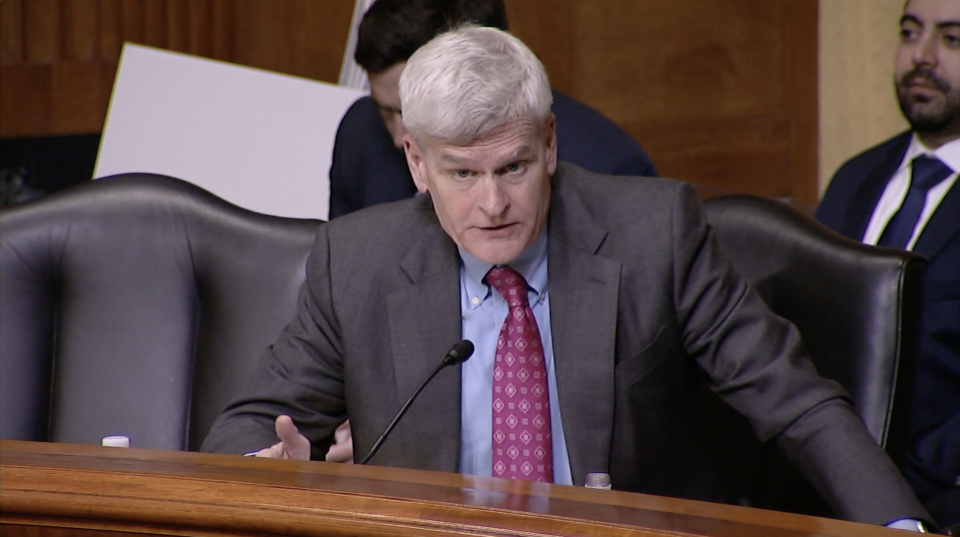
Disney On Ice: Dare to Dream skates into N.O.
April 12, 2012
Tarzan on exhibit in Patterson
April 18, 2012Some associate the phrase “going green” with saving green or saving the environment. Globally, going green can be viewed as a responsible and respectable choice; however it can also be a pricey one.
With growing gas prices, hybrid or electric cars may be tempting, but how practical are they in terms of cost? Recycling batteries, appliances and light bulbs is environmentally friendly but requires an extra effort in a community that already experiences low participation in recycling programs. Some local hardware stores recycle light bulbs and other stores accept appliances, but it may cost some time to plan a special trip.
In September 2010, Terrebonne Parish Consolidated Government launched a residential recycling program, offering residents their own recyclables bin for curbside pickup. Any resident wishing to participate is expected to pay $10 a quarter, or $40 dollars a year, which turns out to be about $3.33 a month. The goal is to replace the current community-recycling program of drop-off bins, which are located at some fire stations and other stores around town. In order to offer the curbside recycling program, a minimum of 10,000 residents must sign up to participate. According to the department, only about 1,100 residents have signed up since September 2010.
For the price of precious time from a busy day, stores like Best Buy, Walmart and Target take used electronics and appliances for recycling and offer store credit, points or gift cards in return. Best Buy accepts up to three items per day per household. The Louisiana-area locations accept most electronics and select appliances. For each transaction, the customer is given an amount of “Reward Zone Points.” Those who earn 250 points receive a $5 gift card to spend in the store.
Target accepts plastic bags, ink cartridges, batteries, plastic bottles and things of the sort at its onsite recyclables bin inside the store at no charge. Through its program with NextWorth, it accepts used electronics and other items in exchange for a Target gift card. An Apple iPhone 3G 8GB in good condition, with no cracks on the display or on its back, can earn about $20, while some movies can earn about $3. Onsite transaction hours vary weekly and are posted in the electronics department. To avoid a wasted trip, the service is also available at www.target.nextworth.com. Although the customer is responsible for packaging, the shipping is free through UPS.
Walmart has a similar program offered online through its partnership with Gazelle. The store offers free shipping and packaging on qualified items. Though the website asks different quality questions than Target’s service, the same fully functional Apple iPhone 3G 8GB in good condition and no water damage can earn you $43, twice the price offered by Target. Once the item is sent in, the store rewards the customer with a www.walmart.com electronic gift card.
Batteries Plus accepts batteries for recycling. If the battery is rechargeable, there is no charge for services. For customers who are buying a new car battery, they also offer a discount if it’s bought from their store. However, customers wishing to recycle alkaline batteries are charged 35 cents per pound.
“We do get charged for it [alkaline batteries],” says Donny Rhea of Batteries Plus. “We’ll take them because normally there are a handful of rechargeable [batteries] in an alkaline pile. All alkaline batteries are safe and mercury free and are safe for disposal except rechargeable and one-time-use [batteries], like watch batteries and hearing aids. If it saves a few that do need to be recycled then it’s the main reason we take them all.”
Another thing to consider when going green is using electricity more efficiently. When it comes to lighting, compact fluorescent light bulbs (CFLs) and light-emitting diode light bulbs (LED) are advances that are supposed to provide a longer life than the everyday incandescent light bulbs and contribute to more conservative electric bills.
According to personnel of Home Depot, CFL bulbs should last 10 times longer than incandescent light bulbs and LED bulbs should last five times longer than CFL’s. Most incandescent bulbs have about 750 to 1,000 hours of use where LED bulbs can last anywhere from 25,000 to 50,000 hours. However, alleged benefits cost more money. A pack of four CFL bulbs (EcoSmart 14 watt (60W) daylight) costs about $9 from Home Depot. One LED light (EcoSmart 13 watt (60W) A19 daylight) can cost $25.97, whereas a pack of six incandescent lights (GE 60 watt soft white double life A19) costs $3.97 from Home Depot.
If each of the incandescent light bulbs lasted 800 hours, one pack would provide 4,800 hours of light, meaning it would take slightly over five packs of six incandescent lights to last the same amount of time as one LED light (at its shortest lifespan). This would cost about $20, less than the price of one LED bulb, although the LEDs are supposed to save money on electricity bills. For recycling those light bulbs, both Home Depot and Lowe’s have recyclable bins located near their customer service.
Hybrid and electric cars are advertised as another way to go green and save green when it comes to gas. As it may be a way to go green, it might not be the best way to save green, depending on the situation. A basic 2012 Toyota Prius can start at about $24,000 and is listed as having 48 mpg highway. Compare it to a car like the 2012 Ford Focus, which gets 40 mpg highway, starting around $18,000, a difference of $6,000 and eight mpg. For the average person who doesn’t frequently drive long distances, a hybrid might not be the best choice.
Given the Focus, on a 12-gallon tank with gas listed at $3.60 a gallon, if the driver fills up the tank twice a month every month for a year, then a little over $1,000 is spent on gas each year. At that rate, it would take slightly less than six years to account for the extra $6,000 spent on the hybrid, which still requires the purchase of gas. However, it may be a good choice for those who frequently travel or commute long distances.
“We just got one [Toyota Prius], and my husband drives it,” says Ronda Breath, a Prius owner and new employee at Greg LeBlanc Toyota. “I think it really gets more like 55 miles to the gallon. He drove to Shreveport a couple of weeks ago and said it got more than 51 gallons. The car is extremely reliable. We had one customer who has 500,000 miles on it and still hasn’t had to replace the battery.”
Sometimes the price may not make up for the benefits. In a region where trucks are a popular vehicle of choice, one might consider the Chevrolet Silverado Hybrid, which according to their website should get 23 mpg highway. But compare that with the regular Silverado that gets 680 miles per 36 gallon tank and it might be hard to see a big difference. According to the information provided, the regular Silverado should get around 18.9 mpg, only about 4 miles less than the hybrid, yet the hybrid costs as much as $9,000 more.
A more recent innovation in the realm or transportation is electric cars. One that has recently gotten some attention is the Chevrolet Volt.
“When you have a hybrid, it works in conjunction with gas and electricity,” says Joe McDonald, certified technologies expert at Trapp Cadillac Chevrolet in Houma. “The Volt has a gas and an electric motor but the wheels are driven only by the electric motor. On-board fuel powers a generator that extends the time before it needs to be recharged.”
The Volt is original in its inside design, but costs quite a sum of money; pricing starts at $31,000. Compare that price to the Ford Focus and it’s nearly twice as much.
“What I really like is that it represents the future is coming as far as vehicle technology,” said McDonald. “It’s not trying to replace hybrids but instead bridge gap to make the best of both worlds. You’ll pay extra to get a hybrid but still only get 40 to 50 miles a gallon. We have a lady who has driven the Volt every day for three months and hasn’t filled up yet. In all reality, the technology of the vehicle is far ahead of its time. It’s not really meant to save money right now, it’s more to represent the future and please the technology gurus.”
Maybe the price stands as a deterrent or possibly there are not enough technology gurus eager to buy, because The Associated Press reported that production of the vehicle is shut down temporarily from through April 23 due to poor sales and a previous investigation into possible fire risks.
Overall, there are many ways to go green. While some may cost a lot of green, others require time and careful planning. With all of the ways to be environmentally friendly, the choice seems to depend more on the time one is willing to put into the cause.
— Esther Ellis is a freelance writer.










